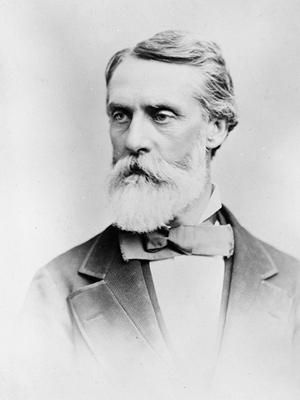One hundred thirty-three years ago on October 31, 1883, Ke Ali‘i Bernice Pauahi Bishop signed her last will and testament establishing within the thirteenth codicil the charitable trust, Kamehameha Schools.
Article 13 - “I give, devise, and bequeath all of the rest, residue, and remainder of my estate real and personal, wherever situated unto the trustees below named, their heirs and assigns forever, to hold upon the following trusts, namely: to erect and maintain in the Hawaiian Islands two schools, each for boarding and day scholars, one for boys and one for girls, to be known as, and called the Kamehameha Schools...”
Upon the death of her beloved kaikua‘ana Princess Ruth Ke‘elikōlani on May 24, 1883, Pauahi was bequeathed approximately 353,000 acres of land, including parcels from Ke‘elikōlani’s father Mataio Kekūanāo‘a, brother Lot Kapuāiwa (Kamehameha V), brother Moses Kekūāiwa, sister Victoria Kamāmalu, and hānai son William Pitt Leleiōhoku.
Additionally, Pauahi had previously received inheritances from her father Pākī, mother Konia, aunt ‘Akahi, and uncle Mahune. Pauahi’s husband, Charles Reed Bishop, also contributed greatly to her land estate by purchasing sacred wahi pana so that they could be placed under her purview and protection.
In total, her personal estate encompassed 485,563 acres of land throughout Hawai‘i pae ‘āīna.
This left Ke Ali‘i Pauahi with a great sense of urgency to determine who her estate would be left to and for what purpose it would be used.
Having yet been diagnosed with the illness which would claim her life a mere sixteen months later, Pauahi began to design, alongside her husband, a legacy to uplift her people through education.
Mr. Bishop wrote, “The improvement of young Hawaiians was an object and desire constantly near to the heart of the founder of the Schools.” He further elaborated upon Pauahi’s true intentions and motivations for founding this institution in the inaugural Founder’s Day Address given on December 19, 1888, stating:
“Bernice Pauahi Bishop, by founding the Kamehameha Schools, intended to establish institutions which should be of lasting benefit to her country; and also to honor the name of Kamehameha, the most conspicuous name in Polynesian history, a name with which we associate ability, courage, patriotism, and generosity. The founder of these schools was a true Hawaiian. She knew the advantages of education and well-directed industry. Industrious and skillful herself, she respected those qualities in others. Her heart was heavy when she saw the rapid diminution of the Hawaiian people going on decade after decade...
“She knew that these fair islands, which only a little more than a century ago held a population of her own race estimated at 300,000 or more, would not be left without people; that whether the Hawaiians increased or not, men from the East and from the West would come in to occupy them; skillful, industrious, self-asserting men, looking mainly to their own interests.
“The hope that there would come a turning point when, through enlightenment, the adoption of regular habits, and Christian ways of living, the natives would not only hold their own in numbers but would increase again like the people of other races, at times grew faint and almost died out. She foresaw that in a few years the natives would cease to be much, if any the majority, and that they would have to compete with other nationalities in all the ways open to them for getting an honest living; and with no legal preferences for their protection, that their privileges, success, and comfort would depend upon their moral character, intelligence, and industry.
“And so, in order that her own people might have the opportunity for fitting themselves for such competition and be able to hold their own in a manly and friendly way, without asking any favors which they were not likely to receive, these schools were provided for, in which Hawaiians have the preference, and which she hoped they would value and take the advantage of as fully as possible…”
Mr. Bishop also explained, in correspondence to Mr. Joseph O. Carter, that: “Character building and preparation for successful struggle with the conditions of life which they cannot avoid and which belong to the common people who are obliged to earn their living, were the objects and the class which the founder of the school had in mind.”
Shortly after the illegal overthrow of the Hawaiian Kingdom, Mr. Bishop again clarified the design and purpose of Kamehameha Schools when he wrote to Theodore Richards: “Whatever form the Government may take, our duty toward the boys and girls is the same. They will need Kamehameha Schools, and the schools will be valuable to them and to the community. We need to cultivate our patience and forbearance in all teaching, and more especially in working with and for Hawaiians.”
Mahalo nui loa e Ke Ali‘i Pauahi for your incredible foresight and strength of character. You serve as a beacon of light for your people and will forever be loved and revered.

Pauahi, alongside her husband Charles Reed Bishop, designed a legacy to uplift her people through education.

Charles Reed Bishop was the driving force that brought his wife’s wishes to fruition.

Princess Ruth Ke‘elikōlani also helped make KS a reality by bequeathing 353,000 acres of her aliʻi lands to her hānai sister Pauahi.
TAGS
16-17action5
CATEGORIES
Kaipuolono Article, Newsroom, Department News
Print with photos
Print text only










